A food forest is the Holy Grail of permaculture. It’s what so many of us aspire to when we think of the ultimate home food system. It is a system that not only feeds humans and animals, but it can provide for other needs as well, such as crafting and building. It is a stable and long-term system that provides a wide variety of foods, with a minimum of input.
So what is a permaculture food forest? Well, it’s exactly what it sounds like. Only, much more. It’s a forest, alright. And there’s definitely food. But the magic of a food forest is in how it is planted, and what is included in it.
A couple weeks ago I wrote an article about what plants to put in a fruit tree guild. Well, a fruit tree guild is kind of like a miniature food forest. So, put together a bunch of fruit tree guilds, along with nut tree guilds, and you have a food forest.
Now, I don’t have a food forest of my own, so my information isn’t firsthand. But I have been studying them for the last three years, and I think I’ve got their DNA pretty much memorized. I will have land of my own some day, and I’ll be ready to plant my food forest!
How to build a permaculture food forest
There are plenty of ways to start a food forest. If you’re lucky, you already have land that is free of trees that you can just plant. But you might need to clear trees or brush to get started. Either way, you’ll want to condition the soil to get it ready for planting, to ensure the healthiest start for your food forest.
Geoff Lawton runs chickens over the land if it is treeless. They scuff up and eat all the weeds, seeds, and grasses, and manure the area. If you have brush and small trees, you can also use goats for clearing. They’ll eat everything! After they’re moved on to a new area, ground cover seed is planted, and trees and berries are set out.
The ground cover provides protection for the new trees and shrubs. It is a chop-and-drop crop that will be used to add organic matter and fertility to the soil. Using a mix that includes a nitrogen fixer, and plants that will add lots of organic matter, is the best way to really get the soil conditioned.
As the trees and shrubs continue to grow, you can start adding in other elements, such as herbs and other edibles; as well as the guild plants that will contribute to the health of the tree itself.
There is a lot of timing and spacing going on when planting any complex system. The larger elements will eventually shade many things out, so you must space things a little wider if you want more than just trees to live in the food forest.
So let’s have a look at what sorts of things you might want to put in your food forest.
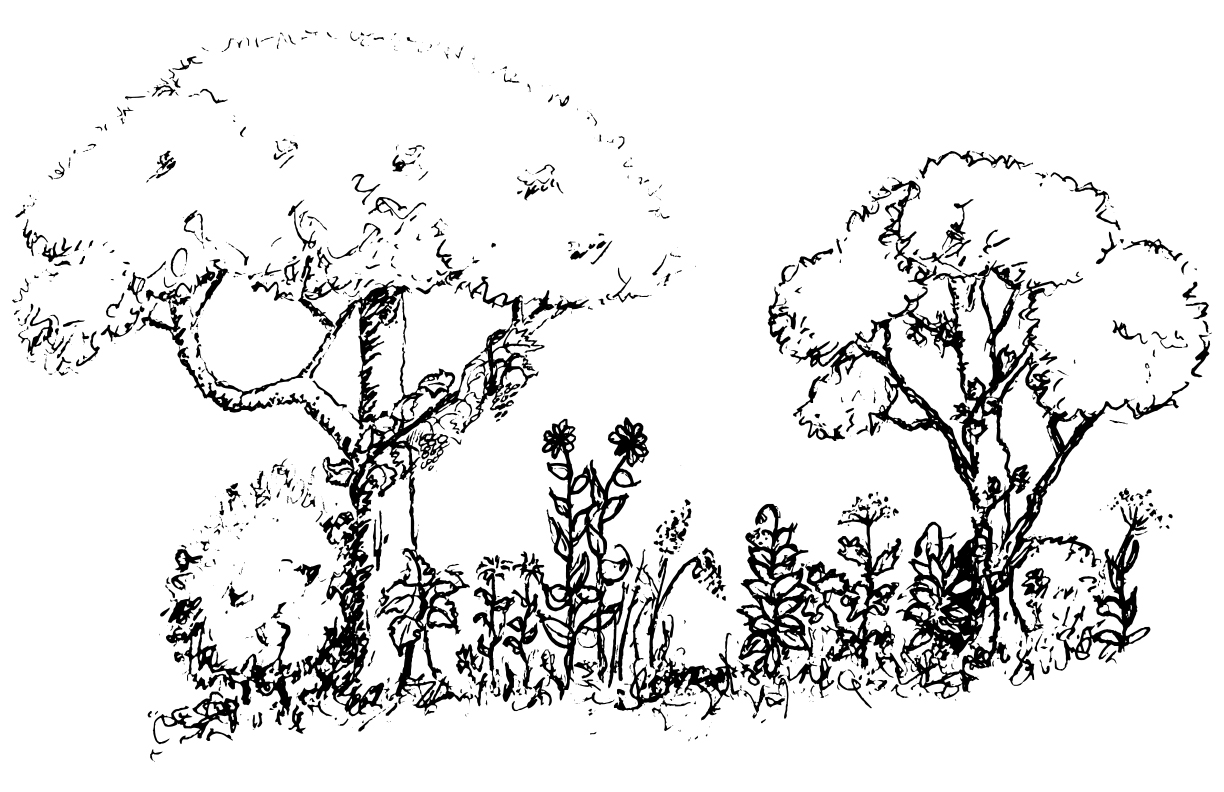
What to plant in a food forest
There are seven layers in the classic permaculture food forest. There is the over story layer, made up of the tallest trees; and the under story layer, made up of smaller and more shade tolerant trees. Then there is the shrub layer, which will generally be a mixture of berries.
Once the bigger plants are in place, you can start adding in the other layers: the herbaceous layer, the ground cover layer, the root layer, and the vining layer.
In the beginning stages of the food forest, you will also want to include what are known as support species. These are trees, shrubs and plants that provide a service to the food forest, especially contributing to the fertility of the soil.
Support species will be chop-and-drop plants that create a lot of bulk organic matter, regenerate quickly, and/or provide fertility by way of nitrogen fixing bacteria.
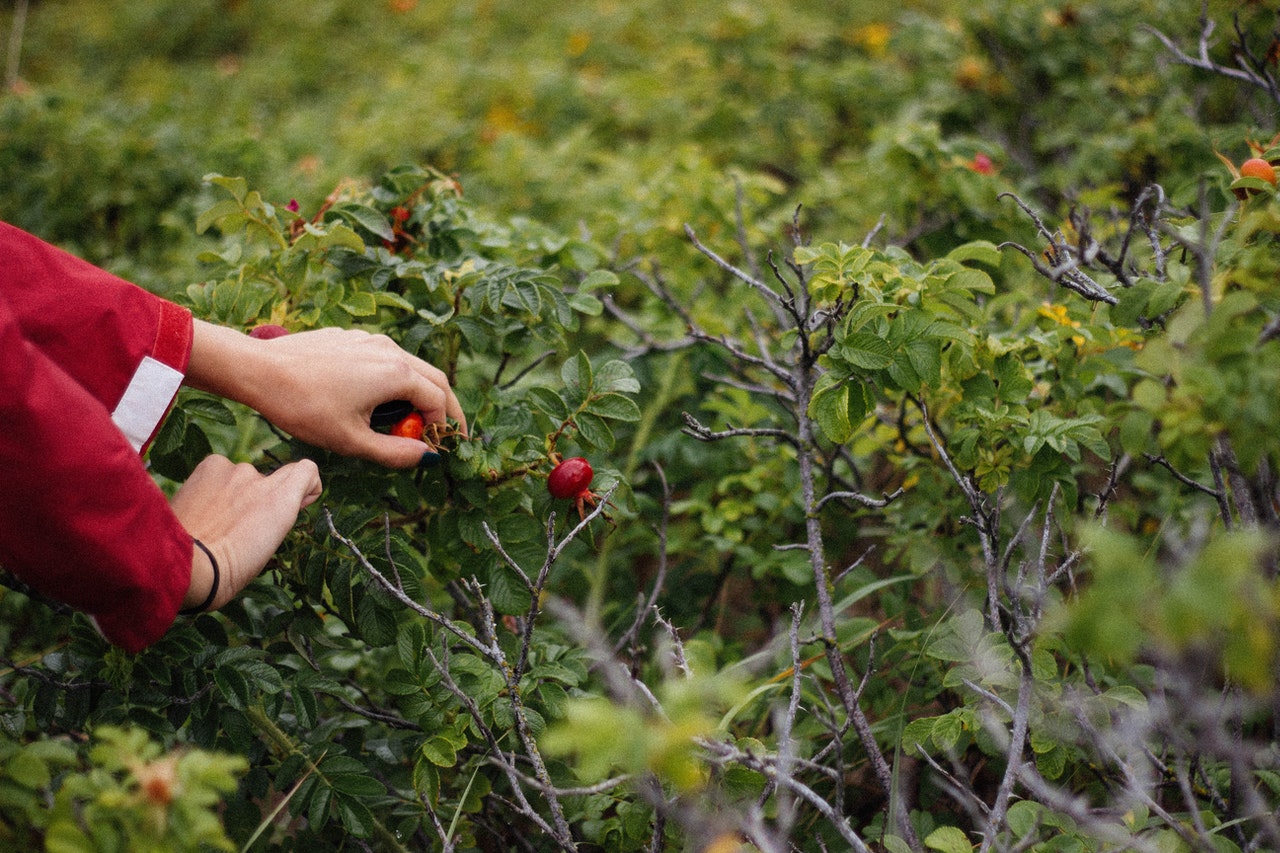
Examples of plants that we can use for each layer
I’ll use my own personal dream food forest as an example. : )
My trees will include apple, plum, pear, cherry, peach, hazel nut, fig, black locust, and some nitrogen fixing trees to act as support species for the productive trees – most likely alder, as that grows prolifically here.
And who knows, maybe I’ll have a warm micro climate where I can grow some citrus, or avocado! That would be awesome. Some trees will be full sized, for the over story, and some will be dwarf varieties, for the under story.
I’m thinking that the over story trees could be somewhat sacrificial, as the birds will be more likely to eat that fruit, and leave the lower fruit to the humans. Tall nut trees could help with keeping the squirrels occupied as well. Hey, a girl can dream.
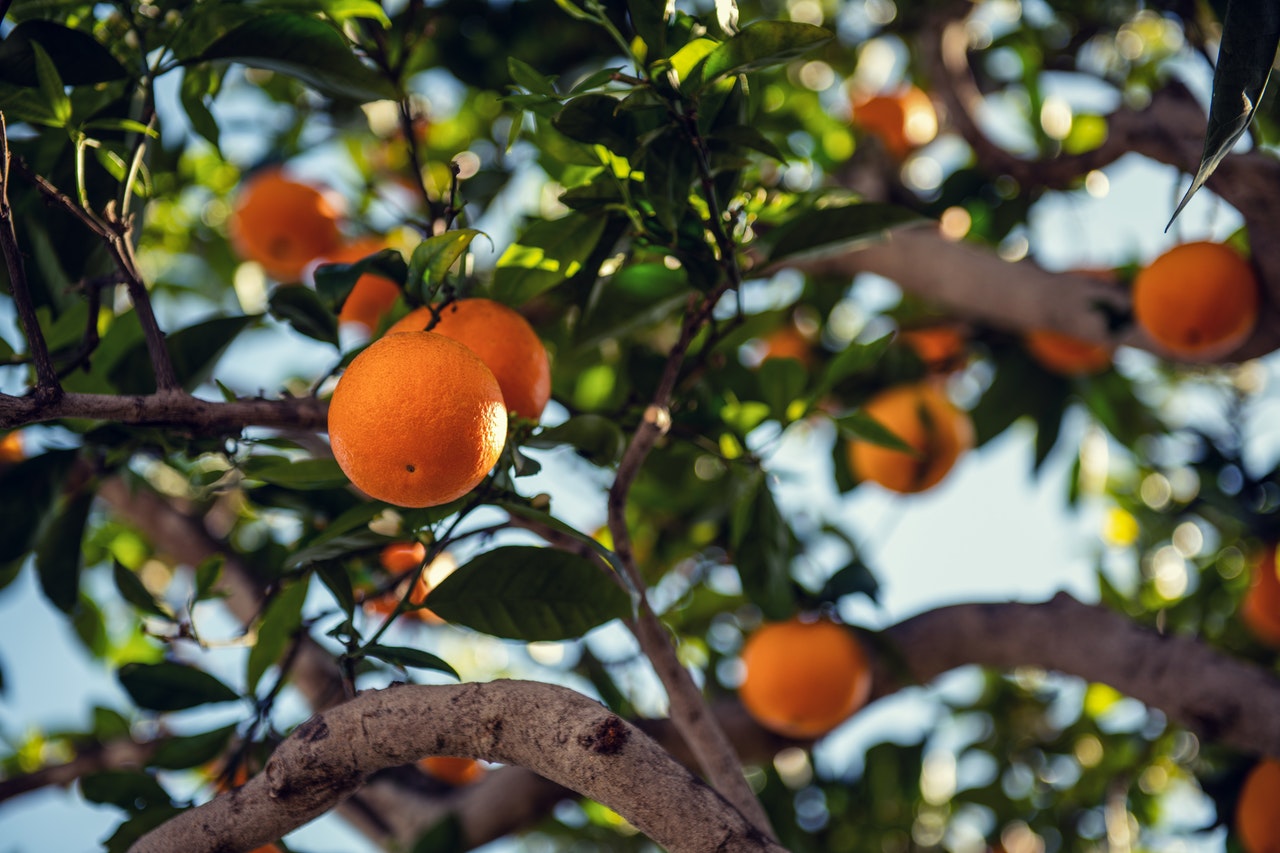
Berries will include raspberry, blueberry, Saskatoon, and sea buckthorn. I will also plant rosa rugosa for the rose hips they provide; plus some nitrogen fixing shrubs such as Autumn Olive.
The branches and twigs of tree and shrub support species are cut and left to decay on the forest floor, just like in a natural forest. As Geoff always says, “A forest grows on a fallen forest.” You can see that happening in every forest you visit. So make sure to let that happen in your food forest.
The herbaceous layer will include many different plants. Definitely some perennial herbs such as rosemary, thyme, sage and chives. But also many annual vegetables such as kale, and other greens and herbs that readily self-seed.
Another popular permaculture plant – and an excellent addition to the food forest – is comfrey. As a dynamic accumulator and a prolific grower, it adds much to the fertility and organic matter of the soil. Plus there will be tall clovers and other nitrogen fixing plants such as field peas and fava beans. These are excellent chop-and-drop plants that will really feed the soil.
I will also include a variety of flowers in the mix, as these are an excellent way to attract pollinators and other beneficial insects. And they just make me happy. Some great self-seeding, and edible/medicinal flowers include borage, calendula, bee balm; and you can also try any wild flower mix that grows well in your area.
For the ground cover layer, there are low growing clovers, alpine strawberries, and creeping thyme, just to name a few. Anything that keeps the ground covered and/or acts as good food for the soil will be welcome. But until the forest is matured, most of the ground will be covered with chop-and-drop plants, so these will be your ground cover as well.
The root layer can include such things as Jerusalem artichoke, ginger and turmeric (if you have the right climate), and you can even throw some potatoes and carrots in there if you want.
For the vining layer, you want to make sure that the trees you choose are strong enough to support whatever you decide to grow on them. Hardy kiwis and grapes can take over a small tree and kill it. So ensure that you not only pick a strong tree, but also keep the vines in check so they don’t take over.
Besides kiwi and grape, you can grow vining peas and beans – how stunning would Scarlet runner beans look?! – in the sunny areas. Blackberries can be included, if you have the time and patience to keep them pruned so they don’t take over; but if you live where I live – the Pacific Northwest – you’ll have blackberries whether you want them or not.
In tropical areas there are many more vining plants to grow. But kiwis and grapes are nothing to sneeze at, and they will both make an appearance in my food forest. And I’m sure I’ll discover more vining plants that I’ll want to include.
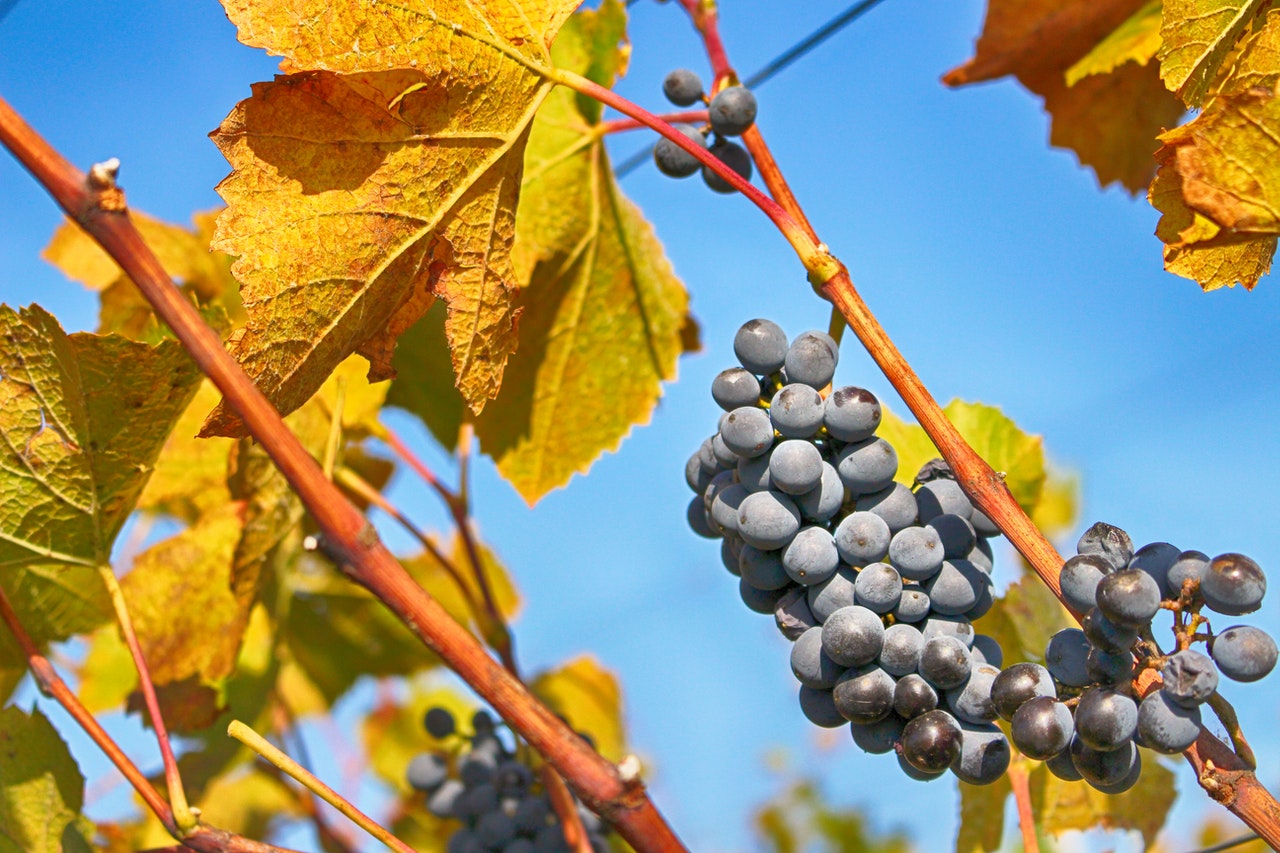
Planting guilds in the food forest
Remember the types of plants in our fruit tree guild? They include: food for people, ground cover plants, protective plants, dynamic accumulators, and food for the soil. And these same types of plants will be used in the food forest system.
You can look at a food forest as many fruit tree guilds planted all together, and create a different guild for each kind of tree if you want. Perhaps the apples will have their own guild, and the plums will have a different one. Or you can experiment with different guild plantings, and see if one is better than another in terms of tree health and production.
Or, you can mix a bunch of seeds together (check out this Homestead seed bank from Seeds Now!) and just fling them all over the area. Some will grow and some won’t, as each finds its place in the system. Planting in this way is much faster than planting individual plants in particular places, and probably works best in larger systems.
How big can my food forest be?
In all honesty, there really is no limit to the size a permaculture food forest can be.
Smaller systems can be more carefully planted, and each tree can have its own guild. Consider a regular town lot, and think of how many fruit trees you can plant there. I bet you can actually get in more than you might think.
By keeping trees small – with heavy pruning and/or growing on dwarf root stock – you can fit quite a few trees in a small space. In a city lot food forest, you will generally leave out the over story, and just have all the trees as growing on dwarf root stock.
Because it is a natural system, a food forest can be any size you want it to be. It works equally well in suburban backyards, large farms, and every size in between.
Whether working with small trees and shrubs on a city lot, or full sized trees on a large acreage, you can adapt the design to your needs.
If you want to grow sun-loving plants in your food forest you can space the trees farther apart. If you want a more shaded forest, plant the trees closer together.
On a city lot, I would keep the tree spacing closer together, and generally plant the trees and larger shrubs around the north end of the yard. This would leave space for an annual garden in front where it will get the best sun.
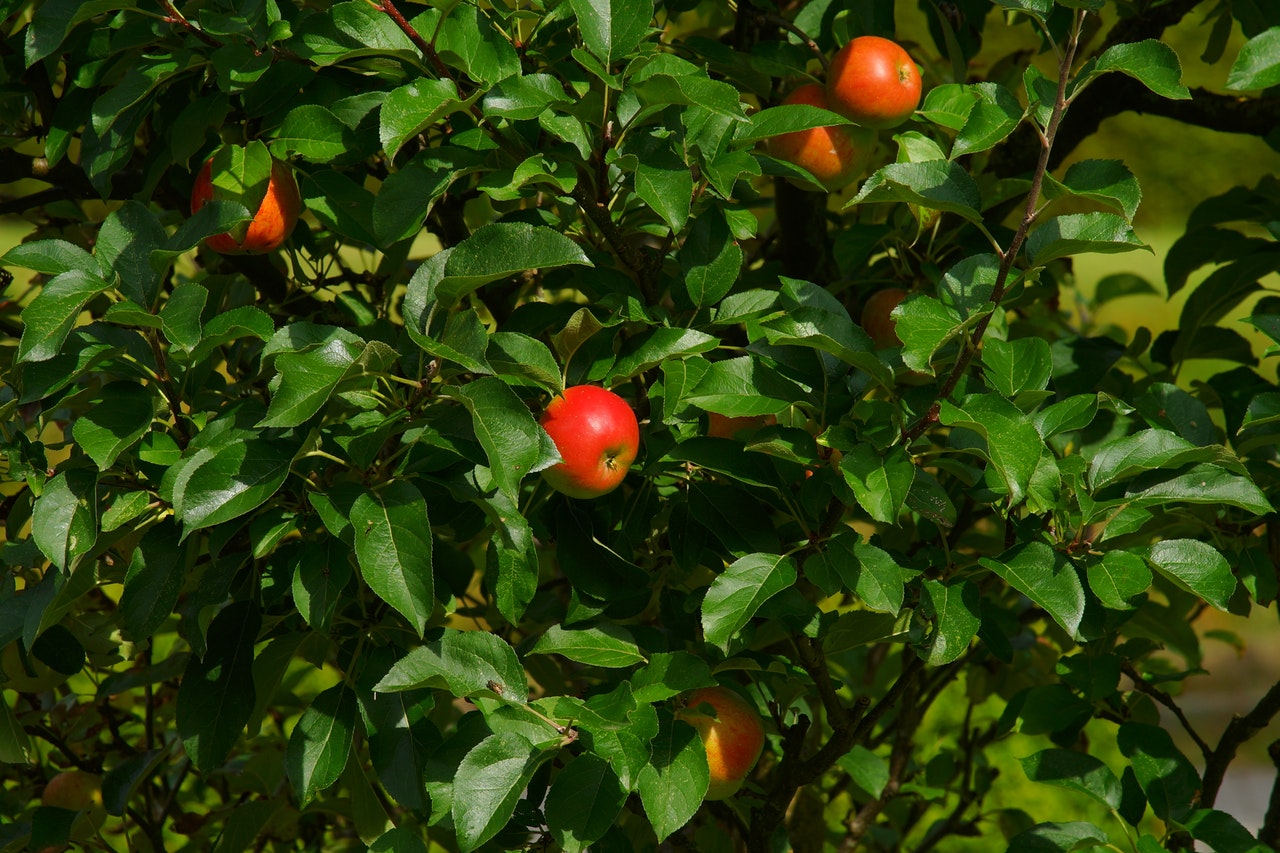
For larger scale permaculture food forests, well, the sky’s the limit really. You can plan your food forest to be anything you want – a shady forest mostly dominated by trees, or a sparser food forest with many different types of plants, shrubs and trees.
You can have an entirely apple dominated food forest, or a mixed stand of fruit trees, berries and other edibles. It really is up to you, and depends on what you like to eat and what you have time to care for.
Or perhaps you would like to grow for market. You do some research and discover that there is a shortage of a particular type of fruit in the area, and you decide to grow that fruit.
And remember, you don’t have to plant your food forest all at once. You can start it small, and then keep adding to it over time.
Start planting on the north side of your property (in the northern hemisphere) and keep adding your trees, shrubs and plants to the south face of the forest. This will ensure that the new plantings don’t get shaded out.
Maintaining your food forest
The main system for maintaining a food forest is called chop-and-drop. This is just what it sounds like – plants are chopped, and then dropped on the forest floor to feed the soil.
Because a food forest is a tree system, some of the plant matter will be branches from trees. This is the perfect thing for feeding a forest.
Fungi will begin to grow and ‘eat’ the fallen branches, breaking them down to create organic matter to feed the soil. A forest, growing on a fallen forest.
There will also be other plants for chop-and-drop. Nitrogen fixers, dynamic accumulators and other organic matter will all contribute to the fertility of the soil.

Learning resources
This overview of the permaculture food forest is quite simplified. But the basics are here. If you would like to learn more, here are a few options.
==>> Best book on Permaculture food forests for urban lots <<==
If you look in the sidebar to the right, you will find a course, presented by the late (great!) Toby Hemenway, called Food Forest Design & Care for Cities and Suburbs (or use this link).
Toby Hemenway, author of Gaia’s Garden: A Guild to Home-Scale Permaculture, was a brilliant permaculture presenter and a magician when it came to small-scale permaculture design. He is greatly missed in the permaculture community.
I haven’t taken this particular course, but I have watched many presentations and trainings by Toby Hemenway, and he is really great to learn from. This course is on my list, and when I do take it I’ll write a review. If you decide to take the course, please leave me a note telling me what you think of it.
There is another course on that page, How to Grow a Medicinal Food Forest, with Michael Pilarski (another permaculture great!) that might interest you. You can get some ideas for medicinals to plant in your food forest.
Geoff Lawton has some great videos about food forests. He’s in Australia, so it’s more tropical than here in the Pacific Northwest; but all the theory is the same. Here’s one to get you started.
I hope you enjoyed this article, and are cultivating dreams of your own food forest. Please leave a comment below if you have any questions or insights.
Health, Hope & Happiness
Tracy
This article may contain affiliate links. If you click on a link and make a purchase, I will receive a small commission, at no extra cost to you. See the full Affiliate Disclosure here.
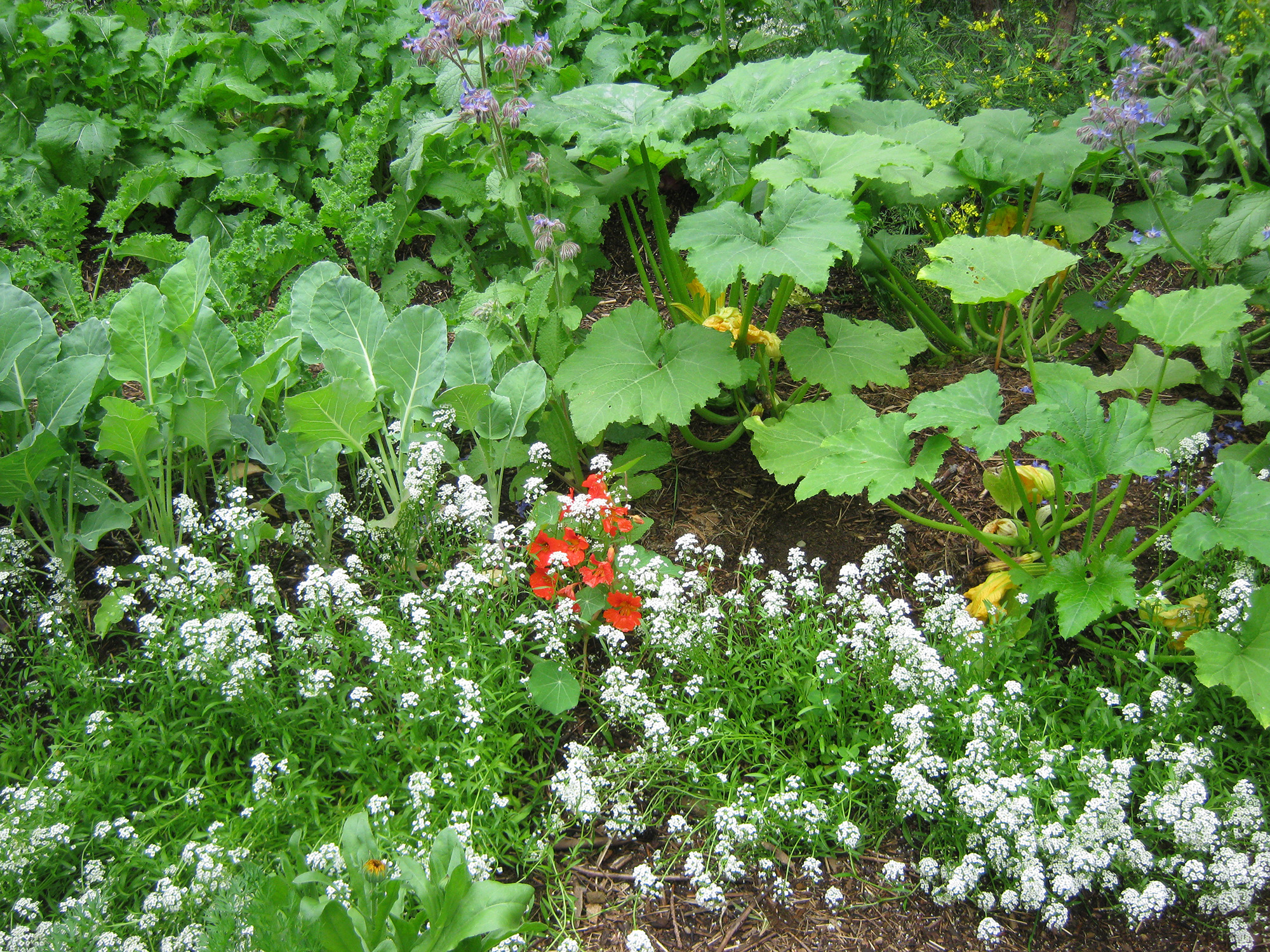
Hello Tracy, I love your website. Very well laid out, informative and the pictures makes it interesting. Very professional looking. Congratulations.
Thanks, Giliam;
I’m glad you enjoyed your visit to my site. I hope you were able to get some helpful information from it.
Cheers
Tracy
Wow! What a fascinating article. I’ve done organic gardening for many years now but scaled back a few years ago when we moved to a smaller block. So I am really interested in your Permaculture website and expertise to make the best use of our smaller garden area.
I love the sound of the shrub layer with mixture of berries, this sounds like a beautiful garden food forest.
Hey Tracy you mentioned that with city lots you should keep the spacing closer together and plant north, that makes sense. But what is the minimum size in square metres that you would need to do a decent food forest?
Thanks in advance.
Hi John;
Yes, food forests are very special things, aren’t they? They aren’t that difficult to implement, and there really isn’t a minimum size. If you can plant one tree, one berry bush, and some other things under it, you have a fruit tree guild. Now put a few guilds together, and you’ve got a food forest. : )
For a small area, you can definitely still create a food forest. One way is to buy your fruit trees on dwarf root stock, and keep them pruned. That way you can fit a two or three into the space that would be occupied by one large tree.
I think the best book about growing a food forest in a city lot is Toby Hemenway’s Gaia’s Garden, which is mentioned at the end of the article. He really was the small scale food forest guru (he unfortunately passed away a few years ago). There is also a course of his in the sidebar ads, all about growing food forests in cities and suburbs, if you are more of a visual learner. He really was a wonderful teacher, and is sadly missed in the permaculture world.
I hope you will continue to ask questions, and learn to grow a food forest of your own.
Cheers
Tracy
What a great idea a food forest sounds! If you have the land you could self sustain for a number of foods, especially in the world’s current situation.
I do have a question regarding the type of foods depending on the climate of the region you live in.
Are some fruits hardier to hasher cooler climates? Would you have to consider the right type of foods to grow to depend where you live in the world?
I do think a permaculture food forest is ideal and sustainable in any climate depending on the choice of plants you choose?